The Sea-life of Cobscook Bay
Along with the Old Sow, you will see an abundance of sea-life on your tour. Below are some of the animals you might see.
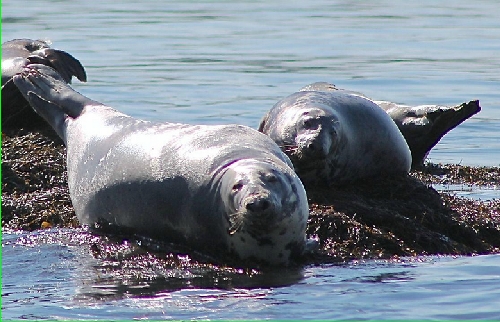 Harbor Seals: Found along the North Atlantic as well as the North Pacific Ocean, Harbor Seals are brown, tan or grey with distinctive V-shaped nostrils. The average life span of the Harbor Seal is between 25 and 35 years. Females bare a single pup after a 9 month gestation period, which they raise alone. In Cobscook Bay, you will see them sunning themselves on rock ledges or hunting for small fish in the tidal eddys of the bay.
Harbor Seals: Found along the North Atlantic as well as the North Pacific Ocean, Harbor Seals are brown, tan or grey with distinctive V-shaped nostrils. The average life span of the Harbor Seal is between 25 and 35 years. Females bare a single pup after a 9 month gestation period, which they raise alone. In Cobscook Bay, you will see them sunning themselves on rock ledges or hunting for small fish in the tidal eddys of the bay.
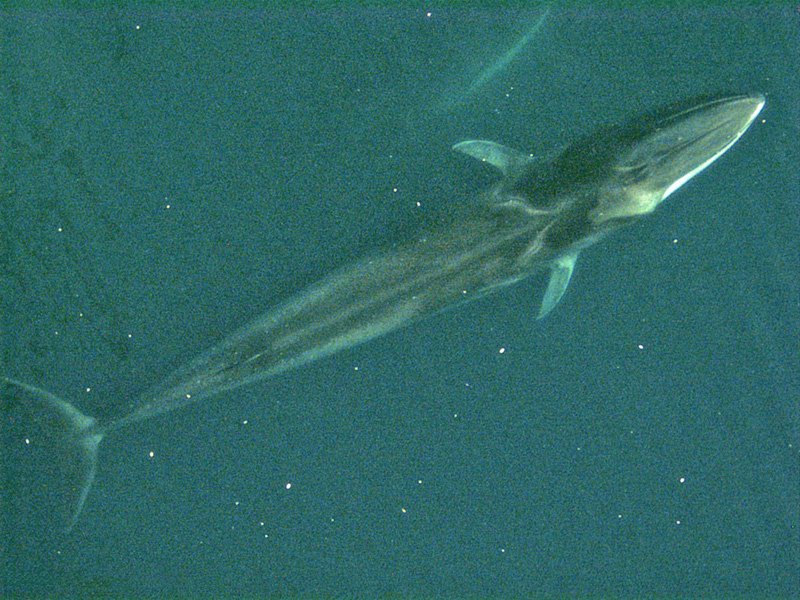 Fin Whales: Fin Whales are a type of Baleen Whale. With an average length of 90 feet and weight of 75 tonnes, The Fin Whale is the second largest mammal on Earth and the largest whale seen in the Cobscook Bay area. Its diet consists of small fish and Krill, which it eats in large quantities.
Fin Whales: Fin Whales are a type of Baleen Whale. With an average length of 90 feet and weight of 75 tonnes, The Fin Whale is the second largest mammal on Earth and the largest whale seen in the Cobscook Bay area. Its diet consists of small fish and Krill, which it eats in large quantities.
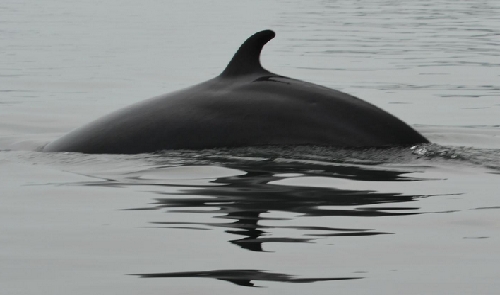 Minke Whale: The Minke is another Baleen Whale. It is the second smallest Baleen Whale, measuring between 23 and 26 feet in length and weighing between 4 and 5 tonnes. The Minke typically lives between 30 to 50 years and its diet, like other Baleen Whales, consists of small fish and Krill.
Minke Whale: The Minke is another Baleen Whale. It is the second smallest Baleen Whale, measuring between 23 and 26 feet in length and weighing between 4 and 5 tonnes. The Minke typically lives between 30 to 50 years and its diet, like other Baleen Whales, consists of small fish and Krill.
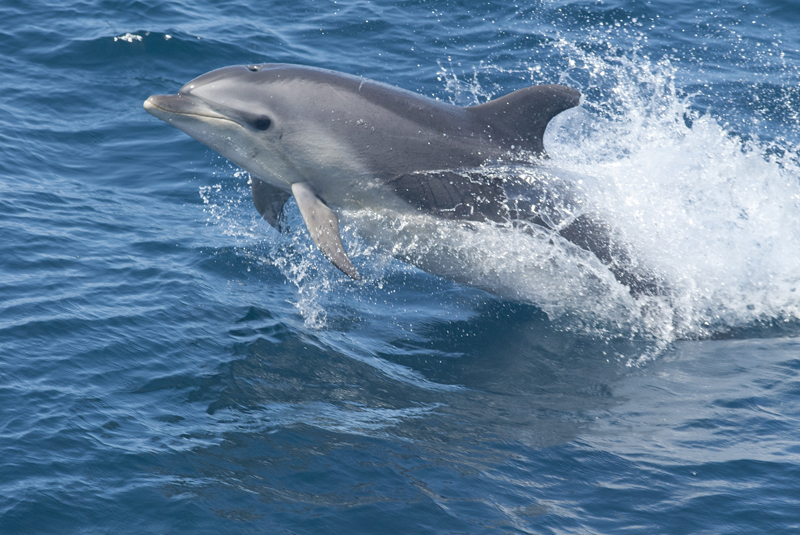 Harbor Porpoise: The Harbour Porpoise is one of 6 species of porpoise. It is the smallest of the marine mammals, and lives in coastal areas or river estuaries. Sometimes, these porpoise will venture up river and have been seen hundreds of miles from the sea. The Harbour Porpoise are slightly smaller than other porpoises, measuring 4.6 to 6.2 ft in length with max weights in a range between 134 to 168 lbs. Their diet consists mostly of small fish such as herring.
Harbor Porpoise: The Harbour Porpoise is one of 6 species of porpoise. It is the smallest of the marine mammals, and lives in coastal areas or river estuaries. Sometimes, these porpoise will venture up river and have been seen hundreds of miles from the sea. The Harbour Porpoise are slightly smaller than other porpoises, measuring 4.6 to 6.2 ft in length with max weights in a range between 134 to 168 lbs. Their diet consists mostly of small fish such as herring.
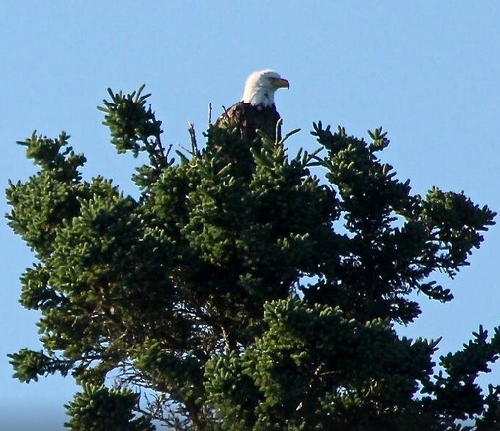 Bald Eagle: On Treats Island, along the Old Sow Tour route, is a Bald Eagle nest where you can see our resident Bald Eagle. The Bald Eagle is a bird of prey that primarily leaves in the coastal regions of the United States. Its diet consists of mostly fish, but it is an opportunistic feeder and will feed on other smaller animals if available. The Bald Eagle is both the National Bird and National Animal of the United States of America.
Bald Eagle: On Treats Island, along the Old Sow Tour route, is a Bald Eagle nest where you can see our resident Bald Eagle. The Bald Eagle is a bird of prey that primarily leaves in the coastal regions of the United States. Its diet consists of mostly fish, but it is an opportunistic feeder and will feed on other smaller animals if available. The Bald Eagle is both the National Bird and National Animal of the United States of America.
